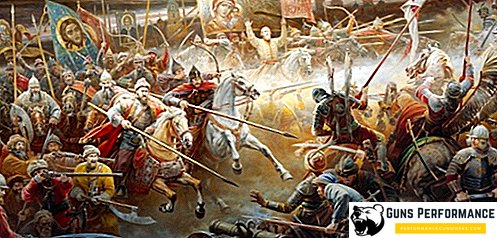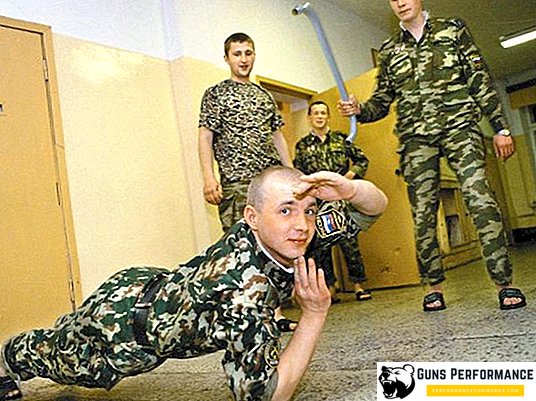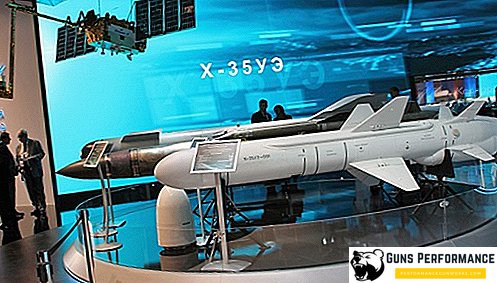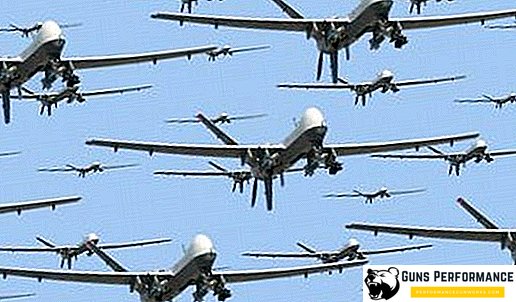
There are moments in Russian history that can be called fateful without any exaggeration. When the question of the very existence of our country and its people was being resolved, a further vector of the state’s development was determined for decades or even centuries. As a rule, they are associated with the reflection of foreign invasions, with the most important battles that every schoolboy knows today - the Battle of Kulikovo, Borodino, the defense of Moscow, the Battle of Stalingrad.
One of such events in the history of our country, without a doubt, is the battle of Molodi, in which on August 2, 1572, Russian troops and the combined Tatar-Turkish army met. Despite considerable numerical superiority, the army under the command of Devlet Giray was utterly defeated and scattered. Many historians consider the Battle of Molodah a turning point in the confrontation of Moscow and the Crimean Khanate ...
Paradox: despite the enormous importance, today the battle of Molodya is practically unknown to the Russian man in the street. Of course, historians and local historians are well aware of the Molodinsky battle, but you will not find the date of its beginning in school textbooks, there is not even a mention of it in the institute’s program. This battle is deprived of the attention of publicists, writers and filmmakers. And in this respect, the battle of the Young is a truly forgotten battle in our history.
Today Molodi is a small village in the Chekhov district of the Moscow region with a population of several hundred people. Since 2009, a festival of reenactors has been held here, timed to coincide with the anniversary of the memorable battle, and in 2018 the regional Duma awarded the Youth the honorary title of "The locality of military valor".
Before turning to the narration about the battle itself, I would like to say a few words about its preconditions and the geopolitical situation in which the Muscovite state was in the middle of the 16th century, because without this our story would be incomplete.

XVI century - the birth of the Russian Empire
The 16th century is the most important period in the history of our country. During the reign of Ivan III, the creation of a single Russian state was completed, the principality of Tver, Novgorod, Vyatka, part of the principality of Ryazan and other territories were annexed to it. Muscovite state finally went beyond the boundaries of the lands of North-West Russia. The Great Horde was finally crushed, and Moscow declared itself its heir, for the first time thus declaring its Eurasian claims.
The heirs of Ivan III continued his policy of further strengthening the central government and collecting the surrounding lands. Particular success in the last question was achieved by Ivan IV, whom we know more like Ivan the Terrible. The period of his reign is a stormy and controversial time, about which historians continue to argue even after more than four centuries. Moreover, the figure of Ivan the Terrible itself causes the most polar assessments ... However, this is not directly related to the topic of our story.

Ivan the Terrible conducted a successful military reform, thanks to which he managed to create a large, efficient army. This in many ways allowed him to significantly expand the boundaries of the Moscow State. The Astrakhan and Kazan Khanates, the lands of the Don, Nogai Horde, Bashkiria and Western Siberia were annexed to it. By the end of the reign of Ivan IV, the territory of the Muscovite state doubled and became larger than the rest of Europe.
Believing in his own strength, Ivan IV launched the Livonian War, a victory in which would guarantee Muscovy free access to the Baltic Sea. This was the first Russian attempt to "cut through a window to Europe." Alas, not crowned with success. The fighting went with varying success and dragged on for the whole 25 years. They exhausted the Russian state and led to its decline, and another force did not fail to take advantage - the Ottoman Empire and the Crimean Khanate, the most western fragment of the disintegrated Golden Horde, vassal to it.
For centuries, the Crimean Tatars have been one of the main threats to Russian lands. As a result of their regular raids, entire areas were devastated, tens of thousands of people fell into slavery. At the time of the events described, the regular plunder of the Russian lands and the slave trade became the basis of the economy of the Crimean Khanate.
By the middle of the XVI century, the Ottoman Empire reached the peak of its power, stretching across three continents, from Persia to Algeria and from the Red Sea to the Balkans. She was rightly considered the largest military power of the time. The Astrakhan and Kazan Khanates entered the orbit of the interests of the Brilliant Ports, and their loss did not suit Istanbul at all. Moreover, the conquest of these lands opened up new ways for the Muscovite state for expansion - to the south and east. Many Caucasian rulers and princes began to search for the patronage of the Russian tsar, which the Turks liked even less. Further strengthening of Moscow could pose an immediate threat already for the Crimean Khanate. Therefore, it is not surprising that the Ottoman Empire decided to take advantage of the weakening of Muscovy and take away from Tsar Ivan the lands it conquered in the Kazan and Astrakhan campaigns. The Turks wanted to get back the Volga region and restore the "Turkic" ring in the south-east of Russia.
At that time, a large and better part of the Russian military forces was on the “western front”, so Moscow immediately found itself at a disadvantage. Roughly speaking, Russia got the classic war on two fronts. After the signing of the Union of Lublin, Poles also joined the ranks of its opponents, which made the position of the Russian tsar practically hopeless. The situation inside the Moscow State itself was also very complicated. Oprichnina devastated the Russian lands sometimes cleaner than any steppe, to this can be added an epidemic of plague and several years of crop failure, which caused famine.
In 1569, the Turkish troops, along with the Tatars and Nogais, already tried to take Astrakhan, but did not achieve success in this and were forced to retreat with great losses. Historians call this campaign the first of a whole series of Russian-Turkish wars, which will last until the beginning of the XIX century.
The campaign of the Crimean Khan in 1571 and the burning of Moscow
In the spring of 1571, the Crimean Khan, Devlet Girey, gathered a powerful army of 40 thousand soldiers and, with the support of Istanbul, went to the raid on Russian lands. The Tatars, practically meeting no resistance, reached Moscow and completely burned it down - only the stone Kremlin and China Town remained intact. How many people died at the same time - is unknown, the figures are from 70 to 120 thousand people. In addition to Moscow, the steppe looted and burned another 36 cities, here the number of losses also went to tens of thousands. Another 60 thousand people were taken into slavery ... Ivan the Terrible, learning of the approach of the Tatars to Moscow, fled from the city.

The situation was so difficult that Tsar Ivan himself asked for peace, promising to return Astrakhan. Devlet Giray demanded to return Kazan, and also to pay him a huge ransom for those times. Later, the Tatars completely abandoned the negotiations, deciding to finish off the Muscovite state definitively, and take all its lands for themselves.
Another raid was planned for 1572, which, in the opinion of the Tatars, was to finally solve the “Moscow question”. For these purposes, a huge army was assembled at that time — about 80 thousand horse-drawn Krymchaks and Nogais, plus 30 thousand Turkish infantry and 7 thousand selected Turkish janissaries. Some sources generally refer to 140-160 thousand Tatar-Turkish troops, but this is probably an exaggeration. One way or another, but Devlet Giray repeatedly stated before the march that he was "going to Moscow to the kingdom" - he was so sure of his own victory.
Probably for the first time since the end of the Horde yoke over the Moscow lands again threatened to fall under foreign domination. And she was very real ...
What was the Russians?
The number of Russian forces near Moscow was several times inferior to the invaders. Most of the royal troops were in the Baltic States or defended the western borders of the state. Prince Vorotynsky was supposed to reflect the enemy's bulk, it was his king who appointed him commander-in-chief. Under his command were about 20 thousand fighters, which were later joined by a detachment of German mercenaries (about 7 thousand soldiers), Don Cossacks and a thousand Zaporizhzhya Cossacks ("Kanev Cherkasy") under the leadership of Colonel Cherkashenin. Ivan the Terrible, as in 1571, when approaching the enemy to Moscow, taking the treasury, fled to Novgorod.
Mikhail Ivanovich Vorotynsky was an experienced military leader who spent almost his entire life in battles and campaigns. He was a hero of the Kazan campaign, where a regiment under his command repulsed an enemy attack, and then occupied part of the city wall and held it for several days. He was a member of the Tsar's Near Duma, but then fell into disfavor - was suspected of treason, but saved his head and got off with just a reference. In a critical situation, Ivan the Terrible remembered him and trusted him to command all the available forces near Moscow. The prince of oprichny voivode Dmitry Khvorostinin, who was one and a half ten years younger than Vorotynsky, helped the prince. Khvorostinin showed himself in the capture of Polotsk, for which he was noted by the king.
In order to somehow compensate for their small number, the defenders erected a walk-city - a specific fortification structure consisting of interlinked carts with wooden shields. This type of field reinforcement was especially loved by the Cossacks; the walking-city allowed them to reliably protect the infantry from cavalry attacks. In winter, this fortification could be made of sleds.

There are documents that allow us to determine the size of the unit of Prince Vorotynsky with an accuracy of one fighter. She was 20034 people. Plus a detachment of Cossacks (3-5 thousand soldiers). You can also add that the Russian troops were squeaking and artillery, and this subsequently played a crucial role during the battle.
Nowhere to retreat - behind Moscow!
Historians argue about the number of the Tatar detachment, which went directly to Moscow. Called numbers in 40 and 60 thousand fighters. However, in any case, the enemy had at least two-fold superiority over the Russian soldiers.
The detachment of Khvorostinin attacked the rearguard of the Tatar detachment as he approached the village of Molodi. The calculation was that the Tatars would not go to storm the city, having in the rear quite a large detachment of the enemy. So it turned out. Learning about the defeat of his rearguard, Devlet Girey deployed the army, and began the pursuit of Khvorostinin. Meanwhile, the main detachment of Russian troops is located in the walking-city, located in a very convenient place - on a hill in front of which a river flowed.
Inspired by the persecution of Khvorostinin, the Tatars fell directly into the fire of cannons and pishchal of the defenders of the walking-city, resulting in significant losses. Among those killed was Tereberdey-Murza, one of the best generals of the Crimean Khan.
The next day, July 31, the Tatars launched the first massive assault on the strengthening of the Russians. However, he did not succeed. And the attackers again suffered heavy losses. The deputy of the khan himself, Divey-Murza, was taken prisoner.
On August 1, it passed calmly, but the situation of the besieged quickly deteriorated: there were many wounded, there was not enough water and food - the horses went to move, which were supposed to move the walking-city.
The next day, the attackers took another assault, which was particularly violent. In the course of this battle, all the archers, who were between the walking-city and the river, were killed. However, this time the Tatars did not manage to take up the fortification. In the next attack, the Tatars and Turks went on foot, hoping to overcome the walls of the walking-city so much, but this attack was repulsed, and with heavy losses for the attackers. The attacks continued until the evening of August 2, and when the enemy weakened Vorotynsky, with a large regiment, quietly came out of the fortification and hit the Tatars to the rear. At the same time, the remaining defenders of the walking-city staged a sortie. The enemy could not bear the double blow and ran.

The losses of the Tatar-Turkish troops were enormous. Almost all the military leaders of the khan were killed or captured, Devlet Girey himself managed to escape. Moscow troops pursued the enemy, especially many Krymchaks were killed or drowned when crossing the Oka River. No more than 15 thousand soldiers returned to the Crimea.
Consequences of the Battle of the Young
What were the consequences of the battle at Molodyah, why do modern researchers put this battle on a par with Kulikovskaya and Borodino? Here are the main ones:
- The defeat of the invaders on the approaches to the capital probably saved Moscow from the repetition of the devastation of 1571. Tens or even hundreds of thousands of Russians were saved from death and captivity;
- The defeat of Molodya for almost twenty years recaptured the desire of the Krymchaks to organize raids on Muscovy. The Crimean Khanate could organize the next campaign against Moscow only in 1591. The fact is that the majority of the male population of the Crimean peninsula took part in the major raids, much of which was cut out from Molody;
- The Russian state, weakened by the Livonian War, the oprichnina, famine and epidemics, received several decades for "licking wounds";
- The victory at Molodyah allowed Moscow to retain the Kazan and Astrakhan kingdom, and the Ottoman Empire was forced to abandon plans to return them. In short, the battle of Molodyah put an end to the Ottoman claims to the Volga region. Due to this, in the next centuries the Russians will continue their expansion to the south and east ("encounters to the sun") and come to the shores of the Pacific;
- After the battle, the borders of the state on the Don and Desna were moved several hundred kilometers further south;
- The victory at Molodi showed the advantages of an army built on the European model;
- However, the main result of the victory at Young is, of course, the preservation by the Moscow state of sovereignty and full international subjectivity. In case of defeat, Moscow in one form or another would become part of the Crimean Khanate and for a long time entered the orbit of the Ottoman Empire. In this case, the history of the whole continent would have taken a completely different path. It would not be an exaggeration to say that in the summer of 1572, on the banks of the Oka and Rozhaika, the question of the very existence of the Russian state was decided.
The fate of the main creator of the glorious "Victoria" in Molodi, Prince Vorotynsky, was sad. Soon, he again fell into disgrace, was accused of treason and "got to the basement", where he was personally tortured by Tsar Ivan himself. The voivode survived the interrogations and was sent into exile, but along the way he died from his wounds.

Interest in the battle of Molodya began to revive only at the end of the 20th century, at the same time the first serious research on this topic appeared. It is surprising why this absolutely real historical event has not yet been adequately reflected in the national mass culture.












